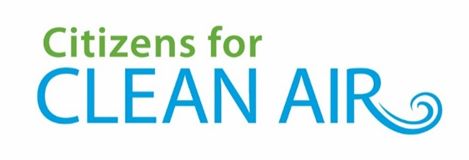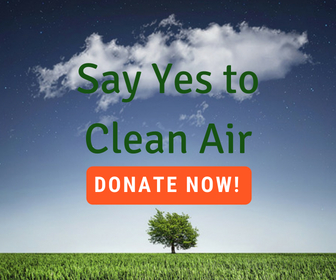Wildfire smoke is a mix of gases and fine particles from burning trees and plants. It can also include chemicals from burning buildings, adding another layer of hazardous particles and gases to the mix. Chemicals contained in wildfire smoke may include benzene, carbon monoxide, carbon dioxide, formaldehyde, and other toxins. That mix changes as smoke plumes drift further away from the source, endangering people’s health thousands of miles away.
People who are especially at risk of experiencing worsening health effects are those with asthma, Chronic Obstructive Pulmonary Disease (COPD), or heart disease, and children, pregnant women, and responders.
It is not always right to assume that staying indoors decreases the risk of breathing polluted air, as observations of PurpleAir particulate monitors across the country indicate the air indoors can be as bad and sometimes worse than outdoors.
Fortunately there are many steps you can take to improve the air inside, including:
In the short term:
- To find out what the air quality is in your neighborhood, use the real-time www.purpleair.com/map and enter your town in the search box on the top left of the map or use the map on the Home page of this website. Dots on the map indicate neighborhoods where monitors are located; numbers inside the dots indicate air quality according to the Air Quality Index. Dots outlined with black circles indicate indoor air quality monitors.
- You can purchase your own outdoor and/or indoor particulate sensor to monitor the air in and around your home/office. Outdoor monitors are, at the time of this writing, $249; indoor monitors are $199 on the PurpleAir website.
- Free-standing, portable air purifiers use a blower and high- quality filters to clean your room air. Portable units are available for small and large rooms and in various types. They work to clear indoor air pollutants, including those from smoke. High-efficiency particulate air (HEPA) filters are recommended by the U.S. Department of Health for their ability to remove at least 99.97% of airborne allergens and pollutants. Ozone-based purifiers are not recommended because ozone is itself harmful to people. Available air purifiers can be found at https://bit.ly/3h6EMNo
- According to the CDC, masks that are used to slow the spread of COVID-19 offer little protection against wildfire smoke. They do not catch small, harmful particles in smoke that can get into your bloodstream and harm your health. To protect your lungs from smoke particulates when outdoors, a mask with a pocket for a carbon filter insert may be more helpful. They can also be used outside during high air pollution days in the winter. There are several varieties and prices available and searchable by entering “face masks with PM2.5 inserts” on your internet browser.
- Upgrade the removable filters on your centralized A/C heating system. The filters work to clear indoor air pollutants, including PM2.5, generated by smoke. Different types use different filtering techniques to draw particulates out of your room space: HEPA, Ionizers, electrostatic purifiers, and activated carbon filters. Find out the types available at https://www.homeclimates.com/blog/air-filter-types
- Window-mount refrigerated air conditioners (A/C) are an inexpensive alternative or addition to a swamp cooler household. These may have two modes: the vent mode will only bring smoky outside air into your space. Use of the typical non-vent mode, however, recirculates existing room air as part of the cooling process. To make sure you’re not re-circulating poor air, you can purchase an indoor air purifier, noted above, to work in conjunction with an A/C window unit (Note: both the A/C and purifier use more electricity than a swamp cooler. Use of solar power will save energy costs.)
In the long term:
- Have your home or office space audited for energy efficiency, including how much air leaks out of, or into your home. Rebates up to $200 are included. Details at: https://www.xcelenergy.com/programs_and_rebates/residential_programs_and_rebates/home_energy_efficiency/home_energy_audit
- Non-Xcel customers can find financial assistance for energy efficient purchases and improvements in the form of incentives such as tax credits or rebates, and through energy-efficient financing. Visit the following website for more information: https://www.energy.gov/energysaver/services/incentives-and-financing-energy-efficient-homes
- Some local nonprofits may also provide home audits for qualified homeowners.
- Consider purchasing and installing a whole-house, centralized air/cooling system due to its ability to recirculate the air in every room. These systems utilize motorized blowers and filters to “process” recirculated room air during, or separate from, the cooling cycle. Households with evaporative coolers, also known as swamp coolers, and typical radiant heating systems (i.e. hot water boilers with baseboard registers) do not have the ability to re-circulate and process room air.[i] Contact your local plumbing and heating expert for more information and estimates.
Additional tips for home or office during high pollution days:
- Use a HEPA-filtered vacuum cleaner.
- Keep windows and doors closed, turn off the swamp cooler to prevent outside air from entering rooms.
- Wet mop the floors and clean surface areas where particulates can settle.
- Don’t use scented candles.
- Change to healthier cooking habits that don’t pollute the indoor air, at least during smoke events. Frying, cooking with a wok, and sauté methods typically emit particulates and harmful toxins into the home environment.
[i] Swamp coolers use blowers to bring in outside air through water saturated pads, and into your rooms, where hot air molecules attach to the wet molecules and then are blown out through open windows.

